Find out how to grow and care for dwarf anemones.
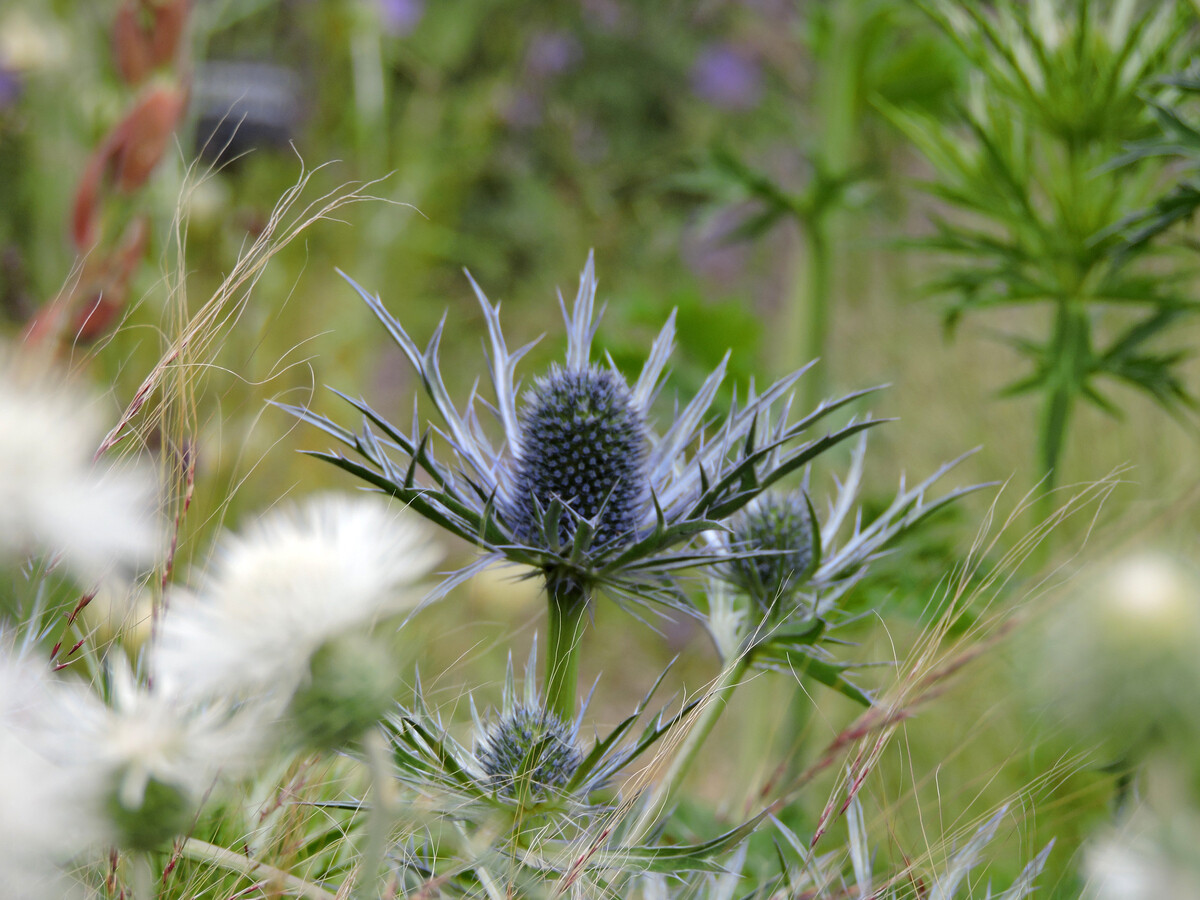
Plant profile - eryngium

A diverse range of plants, with over 250 species throughout the world. Growing throughout our garden, but not in shady positions. Individual flowers are small, but they are arranged in tight cone-like or rounded heads and often surrounded by spiny colourful bracts enhancing their beauty. Small insects, including bees adore the flowers. Foliage, although at times spiny, can be deeply cut and divided and with some coloured in shades of metallic blue-purple to silver. Full sun is required and a well-drained soil, but with some of the taller species requiring a richer, more moisture-retentive soil to get the best out of them. There are two native species, the commonest being sea holly, which grows in sand and shingle around much of the coastline, including Clacton seafront!
In Beth's words
'The coveted native sea holly, Eryngium maritimum, has taken several years to establish, to send its deep searching roots into my stony subsoil. It is not an easy garden plant, preferring the deep pure sand of wind-formed dunes. Easier to grow, and remarkable in all its parts, is Eryngium variifolium, with leaves and bracts so finely divided they appear like spikes cut out of shimmering metal, each stem topped with a thimble-sized cluster of deep blue flowers.'
Wildlife credentials
Possibly the most important insect plant in our Reservoir Garden in midsummer, Eryngiums come in a variety of shapes and sizes, though the shorter, drought-tolerant forms with sometimes larger, often bluish, flowerheads are probably the best. Stand watching them in sunlight and you will see a steady progression of bumblebees, honeybees, smaller solitary bees, wasps and hornets, hoverflies, tachinid flies, butterflies, ladybirds and other beetles ... the list just goes on! Although more suited to sand-dunes than gardens, the native sea holly has particular local resonance as a source of a sweetmeat (candied eryngo root) for which Colchester was famous in centuries past, as much an icon of the place as the native oyster and Roman centurion.
Just some of our range:
Eryngium eburneum - Forms striking rosettes of narrow finely toothed leaves, very reminiscent of the leaves on top of a pineapple. Tall stems carry branching heads tipped with thimble-shaped clusters of white flowers. Handsome all autumn. Synonym E. bromeliifolium. Height and spread 1.2m x 75cm.
Eryngium bourgatii - Individual basal leaves shown off against dry bare soil are deeply divided, crisply curled and prickle-edged with broad, silvered veins and scattered spots like tiny sequins. Heads of blue-green flowers crown a plant which is distinctive all summer. Height and spread 70cm x 50cm.
Eryngium variifolium - forms a flat handsome rosette of green richly marbled leaves, heads of small metallic-blue spiky flowers in late summer. Height and spread 40cm x 30cm.

Eryngium pandanifolium 'Physic Purple' - an evergreen, perennial with blue-green, sword-shaped leaves. Cone-like clusters of tiny red-purple flowers are produced on massive, branched flower stems, in summer to mid autumn. Height and spread 2.5m x 1.5m.
Eryngium pandanifolium 'Physic Purple'
Eryngium planum - slender stems carry a large head of many thimble-sized cones each surrounded by a spiny ruff. Stems and flowers an intense dark blue. Height and spread 90cm x 40cm.
Perfect companion plants



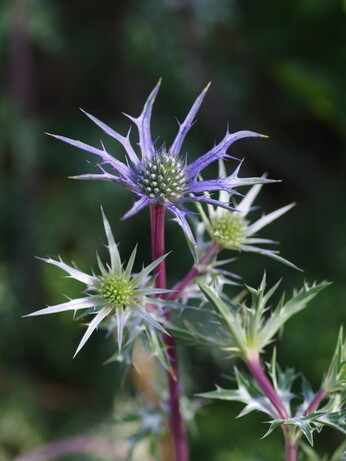
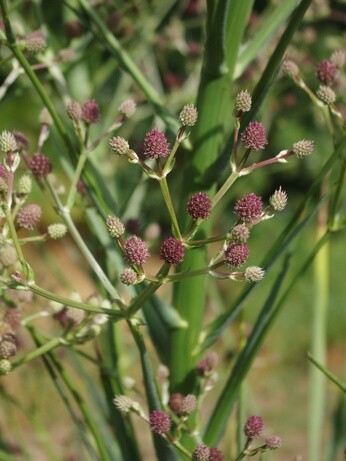
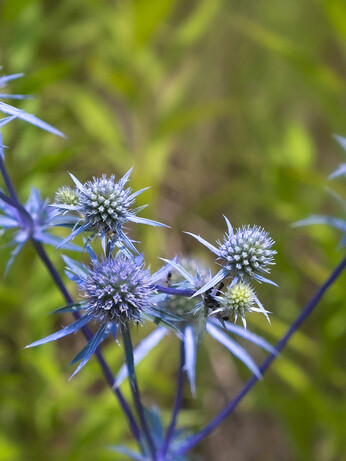

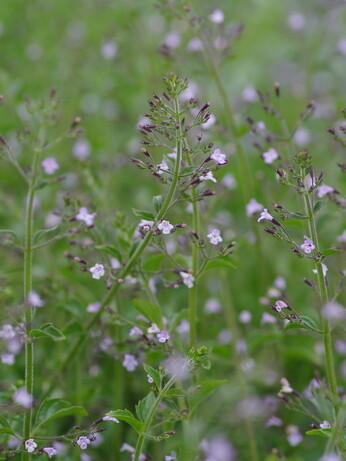
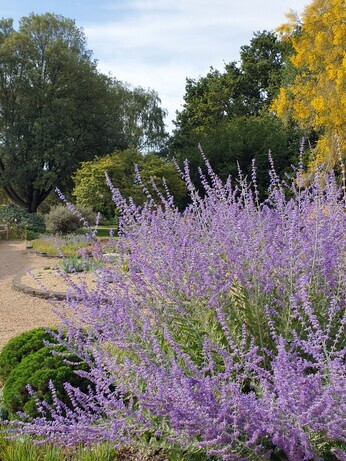
COMMENTS